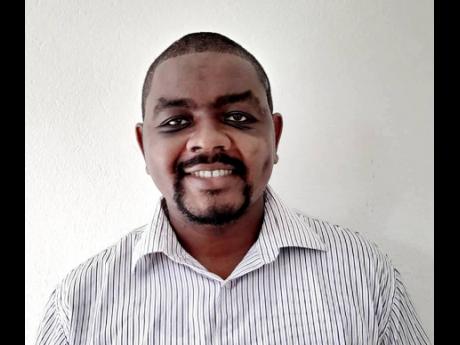A mathematical model for the treatment of breast cancer
A mathematical model for the treatment of breast cancer using magnetic nanoparticles was developed in a study conducted by Dr Victor Job and Dr Nagarani Ponakala of the Department of Mathematics at The University of the West Indies (UWI), Mona campus, and collaborators from the UWI St Augustine Campus and I.I.T. Kharagpur (India).
This form of treatment, called magnetic hyperthermia, is performed by injecting magnetic nanoparticles into cancerous tissues and using a magnetic field to generate heat in order to destroy the cancerous cells. The model constructed in this study simulates the nanoparticle injection process and subsequent heating of tissues by the magnetic field in the cases of FePt nanoparticles and FeCrNbB nanoparticles.
Computer implementation of the mathematical solution was performed using the software FreeFEM++. The primary objective of the study was to determine the factors influencing thermal cell damage in cancerous tissue, while limiting damage to the surrounding regions of healthy breast gland tissue, fat and the overlying skin tissue.
The results revealed that the effectiveness of hyperthermia treatment is dependent on parameters such as injection duration, injected nanoparticle volume fraction, and magnetic field strength and frequency. These findings can be used to improve the clinical efficacy of magnetic hyperthermia therapy for glandular breast cancers and other types of adenocarcinomas that may be treated via direct injection of magnetic nanoparticles into cancerous tissues.
DEEPER QUANTITATIVE INSIGHT
The research conducted in this study has been published in Volume 192, Part A (108405) of the International Journal of Thermal Sciences (Elsevier, Impact Factor 4.5).The research was conducted over a two-year period from July 2021 to August 2023.
According to Dr Job, the mathematical model developed for the magnetic hyperthermia (elevated temperature) treatment of breast cancer is comprised of equations that describe the process of injecting magnetic nanoparticles into a breast tumour, and the spread and deposition of these nanoparticles into surrounding healthy tissues of the breast gland, fat and skin.
“In this research, two types of nanoparticles were considered; namely, iron-platinum alloy and an iron-chromium-based alloy. The model also predicts the blood flow, heat generated and thermal cell death within these tissues when an alternating magnetic field is applied as part of the therapeutic process,” Dr Job said.
Mathematical models are actively being developed to offer deeper quantitative insight on the success of hyperthermia therapies conducted in clinical trials, in vivo mouse studies and in vitro studies for cancers of the breast, liver, prostate, brain and skin.
“The vast majority of these models focus on the commonly used magnetite nanoparticles, but in our breast cancer model we conduct a novel comparison of two promising iron-alloy nanoparticles and their therapeutic effects on thermal damage to cancerous and surrounding healthy tissues during magnetic hyperthermia,” Dr Ponakala said.
MINIMAL UNWANTED SIDE EFFECTS
The most common forms of cancer treatment currently available are chemotherapy and radiation therapy. However, patients undergoing chemotherapy often suffer from major systemic side effects such as vomiting, hair loss and extreme fatigue.
Although radiation therapy avoids some of these systemic side effects and is a localised form of cancer therapy, radiation therapy patients experience significant unwanted local side effects like tenderness, skin thinning and scarring.
“Magnetic hyperthermia therapy offers an alternative localised cancer treatment with minimal unwanted side effects (systemic or local). Our mathematical model was developed in order to better understand the factors that influence the effectiveness of hyperthermia therapy for breast cancer via injection of nanoparticles, while limiting unwanted thermal damage to the surrounding healthy tissues,” Dr Ponakala said.
The primary goal of this research is to improve the clinical effectiveness of therapies for breast tumours and other forms of cancer that can be treated through direct injection of magnetic nanoparticles.
“The breast cancer model effectively simulates both the nanoparticle injection and heat generation processes that comprise magnetic hyperthermia therapy. The results obtained from the model accurately predict the effects of hyperthermia on cancer cell tissue damage over the duration of therapy, and confirms that a significant side effect of this therapy is cell damage to skin tissues,” Dr Job added.
The findings also determine that damage to healthy tissues can be reduced by using iron-platinum nanoparticles and controlling factors such as the duration of nanoparticle injection, concentration of injected nanoparticles, and the frequency and amplitude of the magnetic field.
keisha.hill@gleanerjm.comSOURCE: Faculty of Science and Technology, The University of the West Indies,Mona


